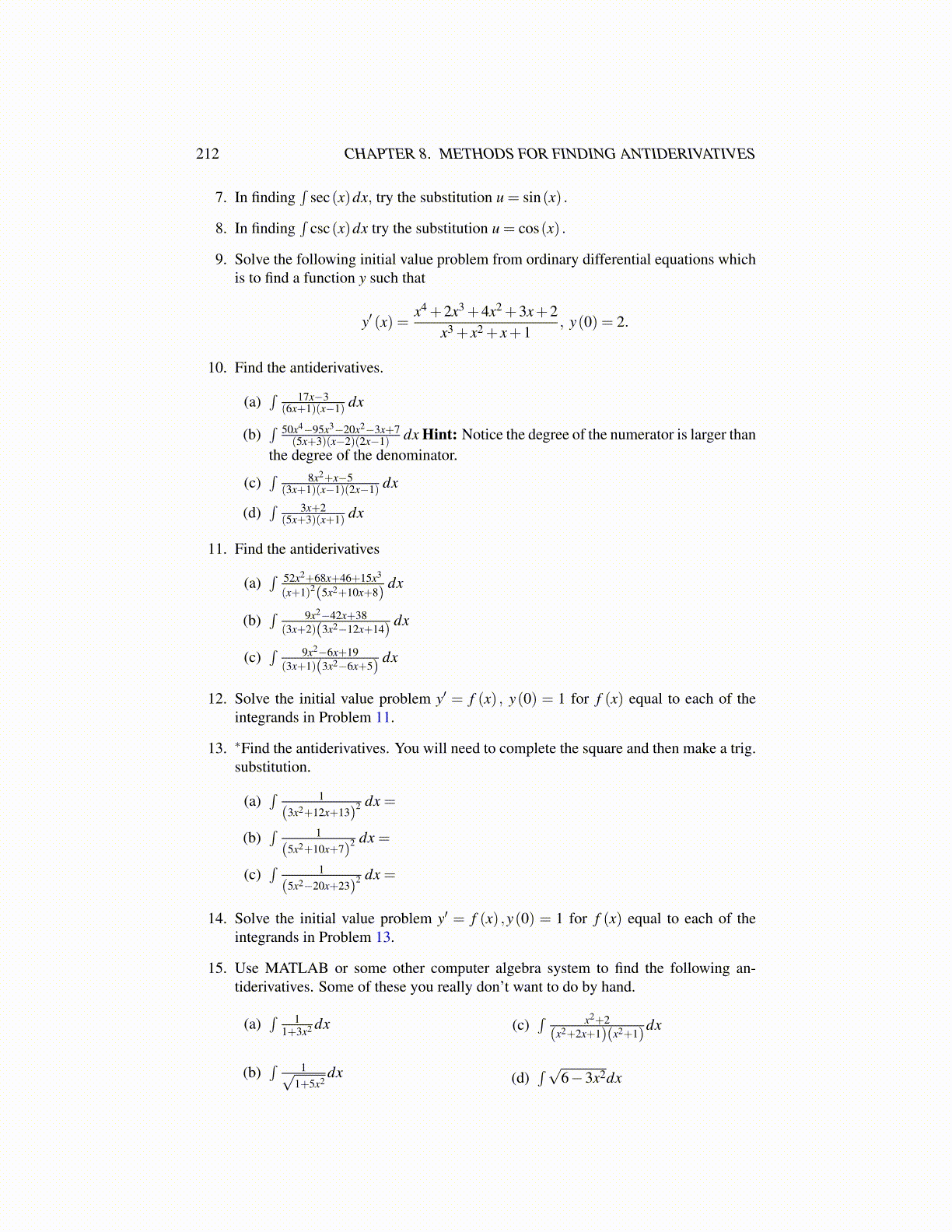
212 CHAPTER 8. METHODS FOR FINDING ANTIDERIVATIVES
7. In finding∫
sec(x)dx, try the substitution u = sin(x) .
8. In finding∫
csc(x)dx try the substitution u = cos(x) .
9. Solve the following initial value problem from ordinary differential equations whichis to find a function y such that
y′ (x) =x4 +2x3 +4x2 +3x+2
x3 + x2 + x+1, y(0) = 2.
10. Find the antiderivatives.
(a)∫ 17x−3
(6x+1)(x−1) dx
(b)∫ 50x4−95x3−20x2−3x+7
(5x+3)(x−2)(2x−1) dx Hint: Notice the degree of the numerator is larger thanthe degree of the denominator.
(c)∫ 8x2+x−5
(3x+1)(x−1)(2x−1) dx
(d)∫ 3x+2
(5x+3)(x+1) dx
11. Find the antiderivatives
(a)∫ 52x2+68x+46+15x3
(x+1)2(5x2+10x+8)dx
(b)∫ 9x2−42x+38
(3x+2)(3x2−12x+14)dx
(c)∫ 9x2−6x+19
(3x+1)(3x2−6x+5)dx
12. Solve the initial value problem y′ = f (x) , y(0) = 1 for f (x) equal to each of theintegrands in Problem 11.
13. ∗Find the antiderivatives. You will need to complete the square and then make a trig.substitution.
(a)∫ 1
(3x2+12x+13)2 dx =
(b)∫ 1
(5x2+10x+7)2 dx =
(c)∫ 1
(5x2−20x+23)2 dx =
14. Solve the initial value problem y′ = f (x) ,y(0) = 1 for f (x) equal to each of theintegrands in Problem 13.
15. Use MATLAB or some other computer algebra system to find the following an-tiderivatives. Some of these you really don’t want to do by hand.
(a)∫ 1
1+3x2 dx
(b)∫ 1√
1+5x2dx
(c)∫ x2+2(x2+2x+1)(x2+1)
dx
(d)∫ √
6−3x2dx